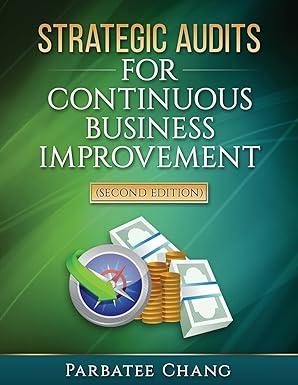Question
Case Study B Journal Entries Reveal a Puzzling Pattern For several years, Ive been a senior audit manager on a subsidiary of a foreign entity.
Case Study B Journal Entries Reveal a Puzzling Pattern For several years, Ive been a senior audit manager on a subsidiary of a foreign entity. We conduct the annual audit, with no review of quarterly financial information.
One year, a few months before we started fieldwork, the client hired a new controller and made some other personnel changes to the finance team. When we began our work, we found more small errors than usual, specifically in revenue and accounts receivable. We attributed the errors to the change in personnel and were not overly concerned, but we modified our procedures for testing revenue and looked for journal entries made to revenue with offsets to unusual accounts. We soon noticed a trend: entries to revenue often had an offset to atypical accounts. The pattern was puzzling because the entries both increased and decreased revenue during the course of the year, so it was difficult to understand any potential reasoning. As the reporting deadline approached, the partner and I sat down with the controller to ask for an explanation. In response to our questions, the controller produced a spreadsheet and showed us that all the topside entries netted out to a minimal effect on the final full-year results. He indicated that the entries were made with the agreement of the CEO. Since we were performing an annual audit of the financial statements on which these entries had little effect, the controller evidently felt our questions were satisfied. But what was the purpose of the entries? our partner asked. We need to understand why these topside entries have been made, he persisted. There was a long, uncomfortable pause. Finally, the controller sighed and said, Well, you may not like the answer. Let me ask the CEO to join us. They explained that they tried to make the quarterly results approximate the budgeted amounts, solely for the purpose of reporting to the foreign parent. This was intended to avoid having to explain unfavorable quarterly variances, a normal part of this companys business cycle. The CEO added that his team fully understood their business, and they were confident that the full-year results would approximate the budget.
a) Consider (and describe) different possibilities for what is happening. That is, what is causing the audit client to behave in this particular way? Describe all possibilities you can think of, from legitimate to nefarious reasons/causes.
b) Now that youve considered what could be happening both good and bad what are you most concerned with happening? That is, what is the prominent risk(s)? Explain.
c) As the auditor in the scenario, what would you do? How do you address the issue at hand and reduce your (and the audit firms) audit risk?
d) Of course, as an auditor youre always dealing with other people. In this scenario, how would you try to manage the interpersonal dynamics? What do you do to maintain a good auditor-client working relationship, etc.?
Step by Step Solution
There are 3 Steps involved in it
Step: 1

Get Instant Access to Expert-Tailored Solutions
See step-by-step solutions with expert insights and AI powered tools for academic success
Step: 2

Step: 3

Ace Your Homework with AI
Get the answers you need in no time with our AI-driven, step-by-step assistance
Get Started


